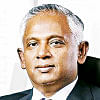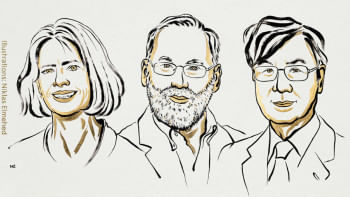Eyes that lead

A classic and familiar office tale: Meet VP (Vice President) Mojnu. Mojnu bhai, known for his "strict leadership," has one peculiar habit: never making eye contact. During meetings, his gaze is always fixed on the projector, the ceiling, or his own fingers. His team jokes that he's either camera-shy or spiritually connected to office furniture. One day, a new recruit thought Mojnu bhai was angry at him just because he never looked his way. HR had to intervene and explain, "No, young boy, he's not angry. He just suffers from 'Eye Contact Avoidance Syndrome.'" Meanwhile, Mojnu bhai wonders why his team lacks enthusiasm, consistently misses deadlines, and often fails to follow instructions with genuine commitment. The answer? He never truly saw them.
In real life, I discovered I had this "eye contact allergy" during a senior leadership course at Four Acres in London, while I was at Unilever. The 360° feedback hit like a hard slap; apparently, my global colleagues found my habit of not making eye contact with people downright insulting. I was shocked. Back home, it was just my shy, introverted self in action. But in that room full of leaders, I realised that what felt normal to me came across as arrogance to everyone else.
We often believe leadership is about what you say, how loudly you say it, or how senior you are. But research by Simon Liegl and his team, "Eyes That Lead", shows that even something as simple as eye contact can make a big difference. Their findings suggest that when leaders look at their team members directly and with purpose, it builds approval, trust, and extra effort. In other words, eye contact isn't just polite, it's powerful.
In Bangladesh, where office culture still leans heavily on formality and hierarchy, this insight matters even more. Many employees hesitate to speak up unless spoken to. In such workplaces, a manager's eye contact during a meeting or even a passing compliment can make someone feel recognised. It creates a connection. But when managers always look at screens, documents, or somewhere far away while talking, they send the message: you don't matter enough to look at.
This small act of eye contact builds psychological safety. It tells people, You're seen. You're heard. You're included. Employees who feel seen are far more likely to be engaged, committed, and willing to put in the extra effort. No motivational speech can replace the power of simply being acknowledged with a look.
According to Liegl's study and similar leadership research by Harvard and McKinsey, leaders should consciously use eye contact to connect, especially during feedback, recognition, and moments of team communication. Look at people when they speak. Make sure everyone, not just your favourites, gets attention. When appreciating someone's work, do so while looking at them, not at your laptop. Eye contact, combined with a smile or nod, works as a silent high-five.
However, remember that it's not about staring blankly or making people uncomfortable. One hard stare from an angry boss is enough to send shivers down a person's spine. It's about looking at others with respect and intention, being present in the moment. Presence is the new power.In leadership, the strongest messages are not always spoken. Sometimes, the most effective way to lead is to simply look someone in the eye and say, without words: I see you, I believe in you, and I'm with you. That single moment can inspire more loyalty, effort, and connection than a hundred memos. So, lift your eyes from the screen. Your team is waiting to be seen.
Not every eye contact is a love story; sometimes it's just poor eyesight. But in leadership, seeing your people clearly is where true connection begins.
The writer is the president of the Institute of Cost and Management Accountants of Bangladesh and founder of BuildCon Consultancies Ltd

 For all latest news, follow The Daily Star's Google News channel.
For all latest news, follow The Daily Star's Google News channel. 








Comments